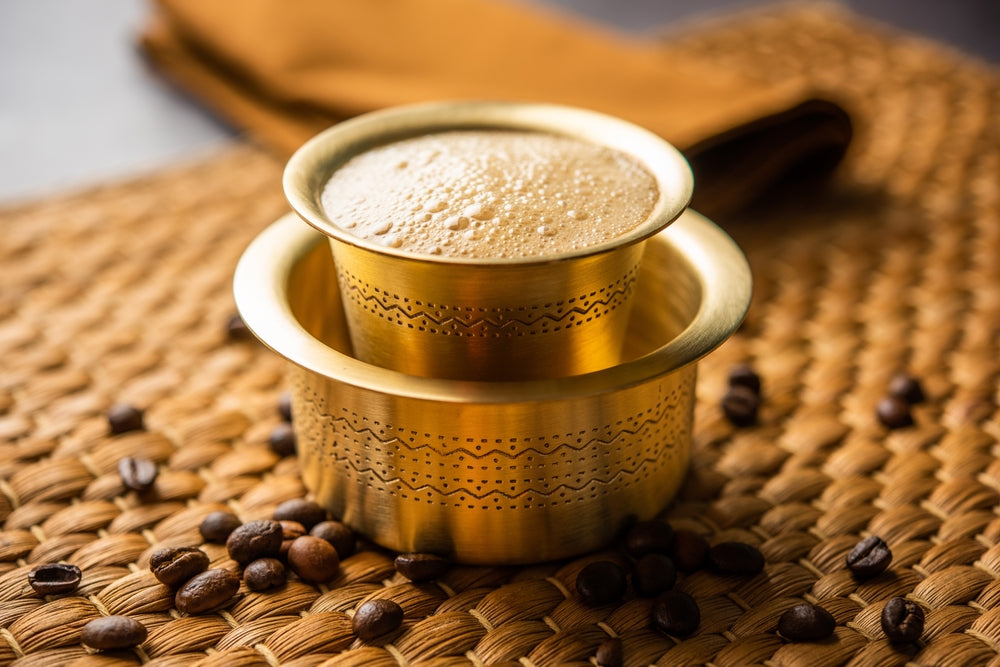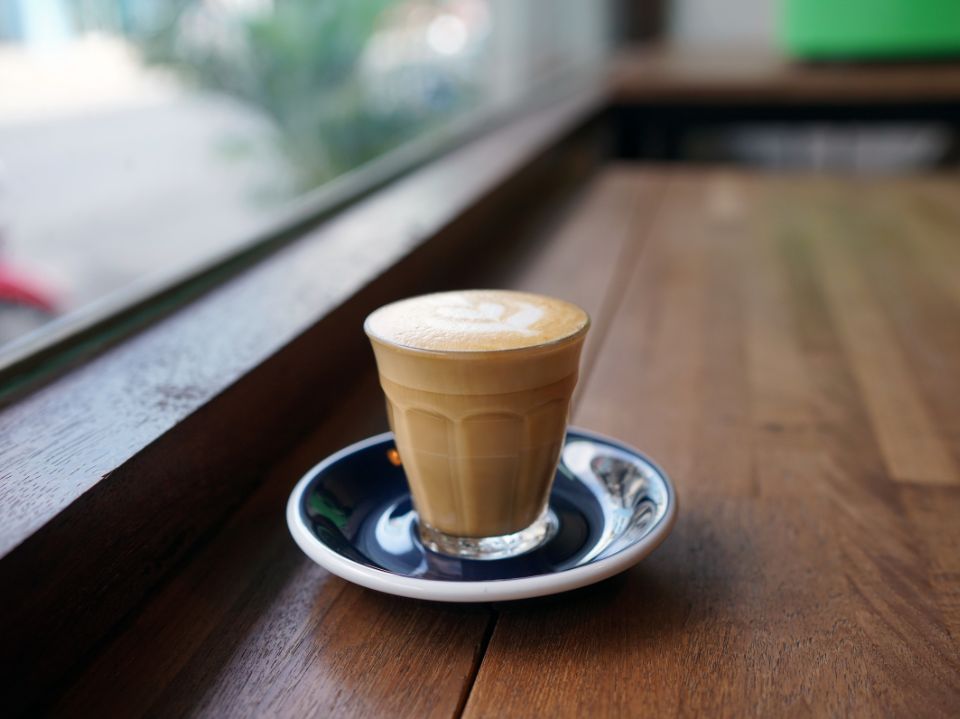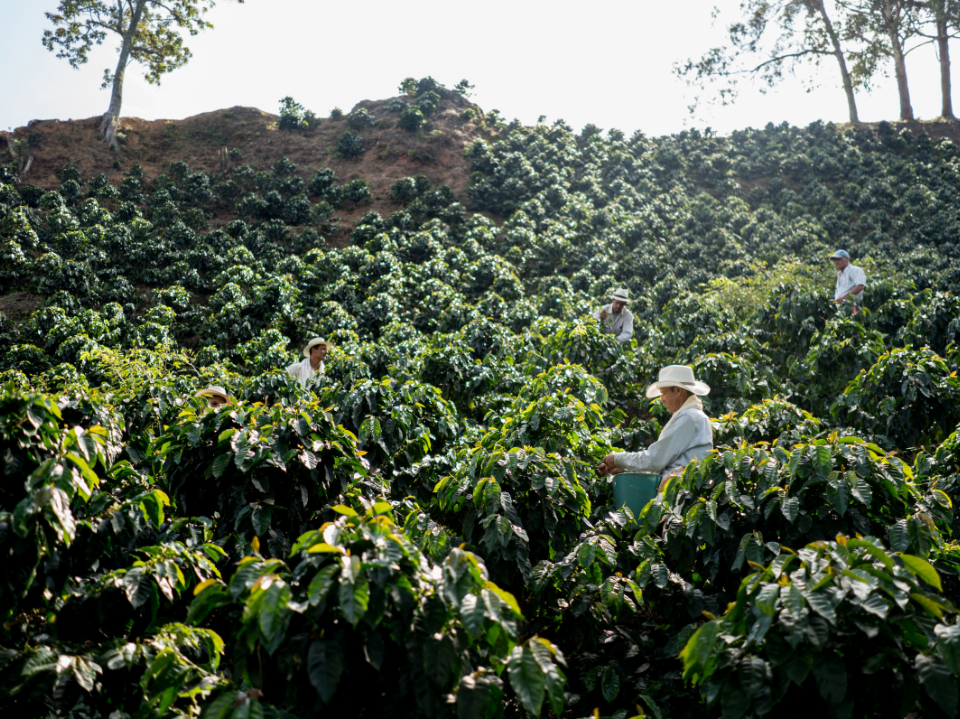When most people think of hot drinks in India, their minds tend to go toward tea, not coffee. But there is an enormous and thriving coffee industry in this huge and populous country, and there are many flavour profiles to be explored.
History of Indian Coffee
According to tradition, coffee was introduced to India in the 16th century by Bada Budan Giri, an Indian Muslim from Yemen. After returning from a pilgrimage to Mecca, where he came upon coffee, Baba Budan Giri smuggled what would become Indian coffee beans back to India and launched the country’s love affair with coffee.
(Baba Budan carried with him seven coffee beans and, as seven is a sacred number in the Islamic religion, it was considered a holy act.)
Where coffee is grown in India has changed over the years. Initially, it was in the hills around Kamataka, then spread to Wayanad, the Shevaroys, and Nilgiris. Over the years it has expanded and moved.
Ceylon became a major centre for Indian coffee beans, but coffee rust, a disease affecting the plants, nearly wiped out cultivation in that part of the country. It is now grown primarily in the southern parts of India, including Andhra Pradesh and Tamil Nadu.
Indian coffee has grown rapidly over the last half-century, with the most recent estimates at 260,000 tons per year.
What Types of Coffee Are Grown in India?
Indian coffee often gets a bad reputation as a large portion of its beans are Robusta, beans that don’t have the same desirability as Arabica. But India Arabica Coffee also has a prominent place in their production. And, even their Robusta has been able to be manufactured to brew coffee to a high-quality standard.
Coffee plantations, especially in South India, are growing some of the finest coffee beans in Asia.
What is Indian Filter Coffee?
Indian cups of coffee are best known for the South Indian filter coffee. This is a drink that is made with boiled milk percolating in finely ground coffee powder.
It is brewed in a metal device that appears to be two metal cups, one of which is smaller and fits into the larger cup. The upper cup is filled with ground coffee powder and boiled water is poured in. A lid is placed on the top of the cup, and the coffee is brewed out of the bottom.
The milk comes in because one to two tablespoons of the brewed coffee is added to a cup of boiling milk with the desired amount of sugar. The concoction is mixed by pouring it back and forth between the cup of milk and a dabarah–a saucer-like dish. This is generally done with great flourish, especially in a coffee house.
Interesting Indian Coffee Facts
- The Chikmagalur hills are known as the Bababudan Giris after the Muslim Pilgrim who, tradition has it, was the first to plant coffee in India.
- Coffee is farmed predominantly in South Indian hill tracts, with roughly 250,000 coffee growers in total.
- As of 2009, India coffee accounted for 4.5% of total coffee production and ranked seventh in the world.
- The "monsooning" of coffee happened by chance when a shipload of coffee en route to Europe became swelled due to moisture in the air, where it developed a distinct, mellow flavour. As a result, monsooned coffee was born, and it is currently one of the world's best coffees.
Exporting Indian Coffee
Indian coffee has become known worldwide as some of the finest. It is said that Indian coffee is unique in that it is the best tasting coffee grown in the shade anywhere in the world. It is well regarded in Europe because it is less acidic and slightly sweet, making it a common coffee used in espresso. Americans, on the other hand, tend to prefer African and South American coffees which are brighter and more acidic--but that may be changing.
The Coffee Board of India is managed by the Ministry of Commerce and works to promote the distribution and use of Indian coffee worldwide. The board has been in operation since 1942, and for many years all Indian coffee was marketed in bulk, but since the 1990s there are individual brands of Indian coffee that handle their own marketing and distribution. Still the board remains to promote Indian coffee generally so that the entire marketplace for it will grow.
How Are Coffee Beans Priced in India?
Indian coffee prices, as a whole, are lower than the cost of prices of coffee from Africa or South America. While African Arabica coffee can be as high as $4.25 USD per kilogram, and Robusta can cost around $1.95 per kilogram, the current projected cost of Indian coffee is $1.78 USD per kilogram for Arabica and $.86 USD per kilogram for Robusta.
Di Stefano & Indian Coffee: A Perfect Match
Here at Di Stefano, we're proud to promote the many flavours of coffee around the world. Indian coffee is a unique as any other type of coffee in the world: rich with taste and aromas, at only a fraction of the price of other coffees.
We are always on the lookout for the latest coffee blends, single origins and aromas to share with our community. Shop our specialty coffee beans range for more types of global coffee.



